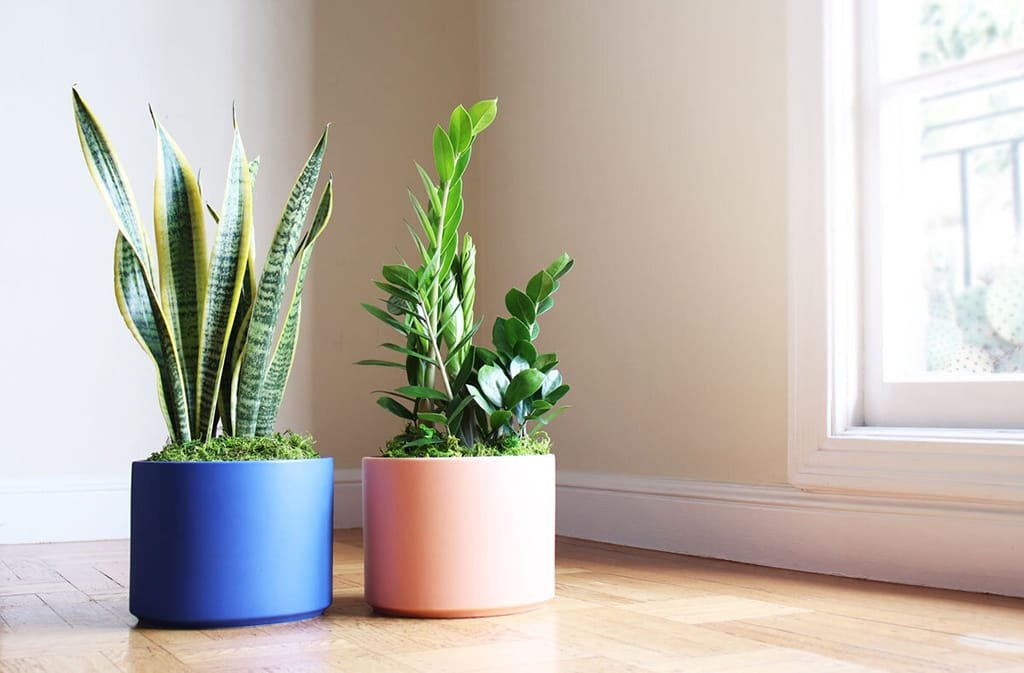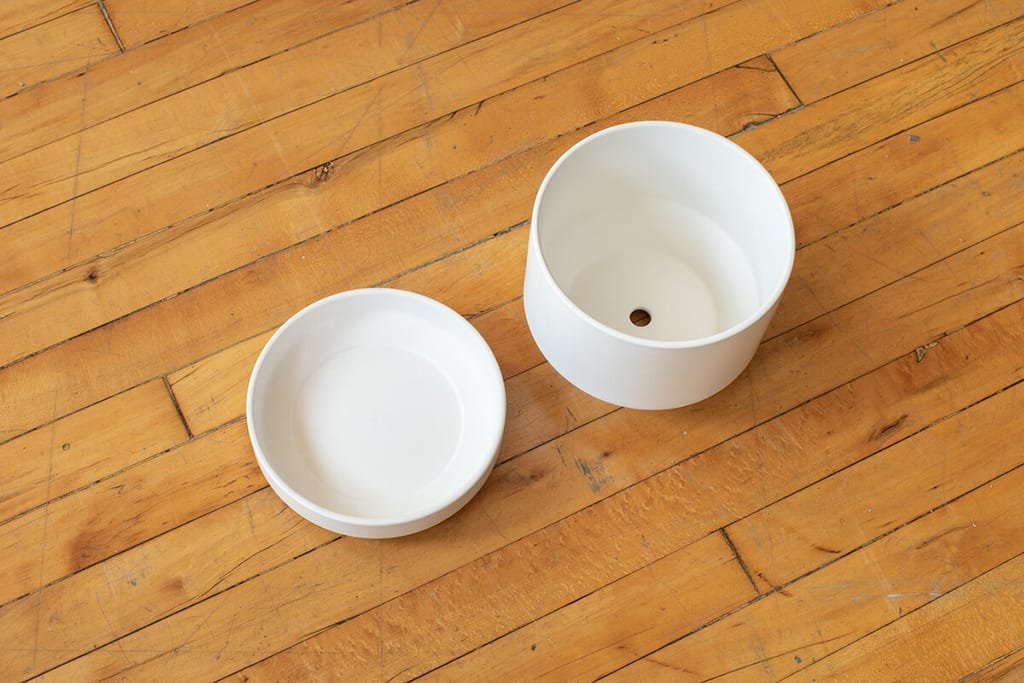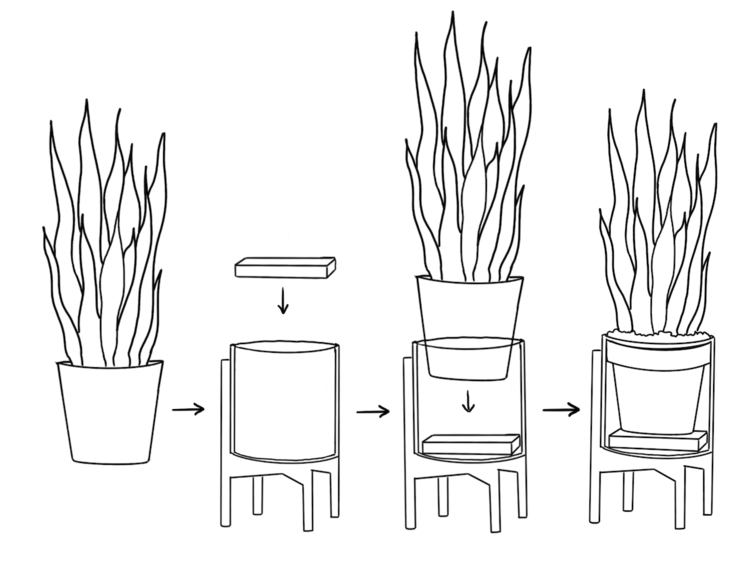3 Ways To Pot A Plant With No Drainage Hole
As most people know, owning and maintaining beautiful indoor plants requires just a few basic necessities. But beyond light and water, what many don’t realize is that there’s a third extremely important factor when it comes to plant care: drainage. Without proper drainage, no plant can thrive—especially if it’s receiving regular watering. For this reason, potting your plant with adequate drainage in mind is crucial to your success. This article will look at three methods for repotting your plants. We'll provide detailed instructions and tips for each method to help you give your plants the best care possible.
Why is drainage important for plants?
Drainage allows for the plant’s roots to aerate and “breathe” in between waterings. Much like excess water is absorbed into the ground in their natural environment, you should always make sure your plant has somewhere to drain after each watering, as accumulated moisture or standing water can lead to serious health issues like root rot.
The most common way to provide drainage for potted plants is with a drainage hole in the pot and a saucer below to catch the water. A typical terracotta pot has this set up, for example. When you repot any houseplant, ensuring proper drainage is vital. If your pot has a drainage hole, we recommend using a saucer or dish below so as not to damage any floor or surface when you water. But what happens if you have a pot with no drainage hole?
Our Scandinavian planters have a drainage hole and deep overflow saucer.
Best Practices for Pots Without Drainage Holes
Not all planters have drainage holes, and that’s okay, too! There are plenty of ways around a pot without a drainage hole. In fact, some of the most stylish planters do not have drainage holes, as they sit atop sleek wooden stands (and this would be a big mess if there were a drainage hole!). Our Mid-Century planters, for example, do not have drainage holes and are designed to sit directly on wooden stands or other surfaces.
For our pots with no drainage hole, we use a method called “staging”, which we’ll explain in more detail below. Here are some other ways you can create some drainage in a pot with no drainage hole:
1. Layer rocks at the Bottom of Your Pot
Placing rocks or gravel at the bottom of your pot is a common practice to create some separation between your plant’s soil and any excess water. However, this does not in a literal sense help with drainage, and as your plant grows, its roots can stretch into this bottom area and be exposed to the sitting water. It's essential that houseplants should be thoroughly watered, but with proper drainage to prevent root rot.
2. Drill a Drainage Hole
Some people like to go the DIY route and drill a hole in their favorite planter with no drainage. This is do-able, but keep in mind that you risk breaking the pot altogether.
Staging is the best way to pot plants in planters without drainage holes. All Léon & George plants are staged as seen in the diagram.
3. Staging (the BEST way!)
The simplest and easiest way to set your plant up with proper drainage when there’s no drainage hole is to stage it. Staging simply implies that the plant does not actually live inside the decorative planter, but rather in its plastic nursery pot (i.e. the one it came in). When you repot in fresh potting soil that drains well, this further ensures optimal moisture levels for the plant. Plastic nursery pots generally have several small drainage holes at the bottom (even better!), and can simply be placed inside the ceramic pot.
PRESERVED FOREST MOSS
The ideal soil cover for indoor greenery, this 100% natural forest moss is green, clean and ready to bring that extra polished look to your indoor plants after staging.
If you tend to have a heavy hand with watering, we recommend slightly elevating your plant inside the pot, either with a wood plank, styrofoam block, or any other material that won’t mind the occasional douse of water. This ensures that no matter how much you water, your plant will never “sit” in standing water for long periods of time.
There are actually quite a few benefits to staging your plants, beyond just drainage:
Swapping plants from one pot to another is easy and mess-free.
You can take your plant out of its decorative container without any fuss to give it a shower in the sink or bathtub (plants love this type of watering!).
You can easily tell when your plant is ready for repotting, as the roots will begin to come out of the plastic nursery pot (simply lift the nursery pot to have a look!).
For those passionate about choosing the correct house plant to grow indoors, we offer a comprehensive list to guide your green journey. Dive into our collection at this link and enjoy year-round gardening. Discover plants that are well suited to growing in containers, ensuring they thrive and bloom beautifully within your space. So have at it and start staging your plants! If you’re still on the hunt for the perfect ceramic, keep in mind that our ceramics are sized to fit most nursery pots and are 100% water-sealed, which means they'll never damage your floors or surfaces. Handcrafted with high-fired stoneware, the simple and elegant design was created to stand the test of time! Find the perfect size for your plants, or better yet, order a fully-potted plant set from Léon & George and let us do the work for you!
1 TO 1 VIDEO CALL WITH AN EXPERT
Yellow leaves? Worried about watering or struggling with incorrect lighting? Book a call and get truly personalized support for all your plant-related needs.




